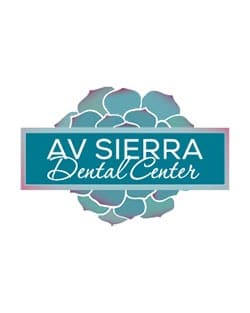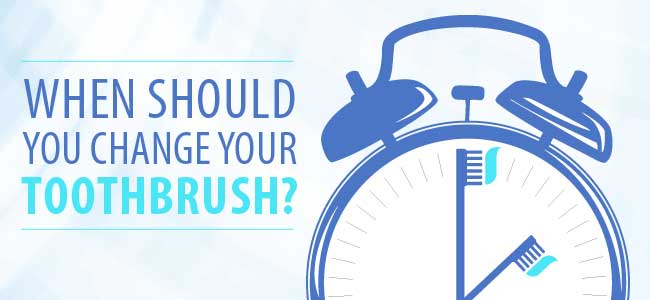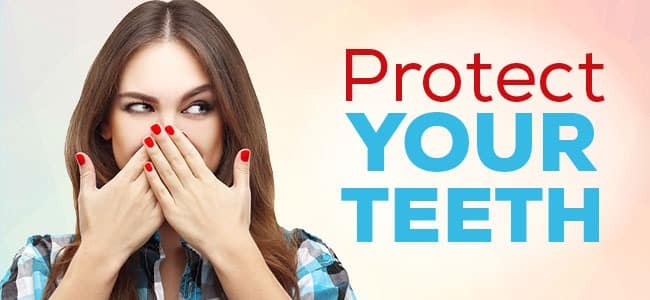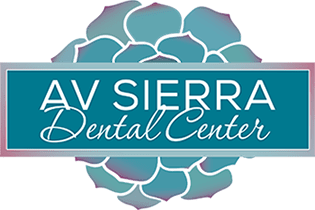Dental Tips for the Mentally Disabled

National Down Syndrome Awareness Month: Dental Tips for the Developmentally Disabled If you’ve ever taken care of someone else, you understand how difficult it can be to get them to brush their teeth and floss every day. When you’re caring for a child—or adult—with a disability, the challenges can be even greater, as they may be predisposed to certain oral health conditions. On top of that, going to the dentist can be stressful to anyone, let alone someone who’s not able to prepare for what to expect. October is National Down Syndrome Awareness Month, and we would like to share a few tips you as a caregiver can do to make sure your loved one maintains a healthy smile. Dental Issues for People with Down Syndrome There are common mouth issues that are associated with Down syndrome. Being aware of these issues will allow you to prepare and understand what steps to take next. Children with Down syndrome often wait twice as long for baby teeth to arrive–usually around 12 to 14 months. Along with delayed eruption, they may have missing teeth, or their teeth may emerge in a different order than usual. People with Down syndrome have a smaller upper jaw, which will crowd the upper teeth, causing an unaligned bite. Orthodontics can solve this issue, but they can be problematic for younger children. You may want to wait until they are older. Down syndrome also compromises the immune system, leading to a higher chance of periodontal disease (gum disease). However, the treatment for gum disease remains the same: Brush their teeth at least twice a day. Floss every day. Visit the dentist regularly. X-rays and examinations are particularly important to monitor common mouth issues associated with Down syndrome. How to Prepare for Going to the Dentist Going to the dentist can be frightening for children or adults with Down syndrome or autism. Here are some steps you can take to make the visit to the dentist go as smoothly as possible. Inform them of what to expect. Showing them what will happen while at the dentist’s office will eliminate their fear of the unknown. Fraser has created a great app for children and adults with mental disabilities. It uses social stories and videos to educate kids on various dental topics, including the sounds they will hear and instructions they’ll receive at the dental office, as well as steps they can take to maintain their oral health at home: My Healthy Smile Before you bring your loved one in for care, schedule an appointment to meet with the dentist to explain how to best accommodate your loved one during a dental visit. As a side benefit, you will both have some time to establish a relationship with the dentist so everyone can be more comfortable with the process. Taking care of a disabled person’s dental needs can be challenging. Here at AV Sierra Dental Center, we want to make your visit an enjoyable and rewarding experience for everyone. Contact us today to set up an appointment. Resources: https://www.ndss.org/Resources/Health-Care/Associated-Conditions/Dental-Issues-Down-Syndrome/ https://www.autismspeaks.org/sites/default/files/documents/dentalguide.pdf
How to Pull a Child’s Tooth

My Kid’s Tooth Is Loose — What’s Next? Being a parent is one of the most stressful tasks in a person’s life. Once you master one stage of your child’s life, they move on to the next stage with a whole new set of problems to figure out. Case in point: their mouth. You spend years ensuring their teeth come in healthy and clean, only for them to start to fall out. As much as we love to hear the types of methods used to remove loose baby (also called primary) teeth, there are issues that can arise from this type of removal. How Do I Know When a Tooth Is Ready to Be Pulled? A loose tooth can cause your child pain and discomfort. You may have the urge to pull it out, but there are a few reasons why that might not be the best idea. Be cautious of which teeth are loose first. The first teeth that come in are usually the first teeth to come out (the front teeth should normally become loose before the back teeth). A loose tooth could be caused by damage to that tooth — for instance, from a nasty fall. If you have concern that a tooth is loose due to something other than natural causes, contact your dentist for an examination. Primary teeth help guide in adult teeth. If a tooth is pulled prematurely, this can affect the placement of one’s adult tooth. Be aware of your child’s discomfort. If the tooth isn’t ready to come out yet, it will most likely still be connected to nerves, causing pain. Another indicator the tooth isn’t ready to come out yet is if there is a lot of blood when it’s pulled. You Won’t Let Me Tie Their Loose Tooth to a Drone – What Should I Do Instead? To keep things natural, a good rule of thumb is to do what cavemen did. They didn’t have doors and automobiles to attach their loose teeth to, did they? If your child indicates they have a loose tooth, be sure to monitor it. Some kids may become anxious thinking about their teeth falling out. If this is the case, be reassuring and encouraging throughout the process. Beyond that, they will do all of the work. Once they find out they have a loose tooth, they will wiggle it with their tongue or fingers, leading to it falling out in a less intrusive way. If the tooth seems fairly loose and you want to help out, use a piece of gauze and gently pull the tooth while doing a wiggling motion. You shouldn’t have to use much force at all, so if doesn’t come out with a gentle pull, it probably isn’t ready yet. There are general guidelines of when teeth are expected to become loose and fall out, but every child will be different. If you are concerned with how long your child’s baby teeth have remained in their mouth, a dentist can determine if any of them need to be pulled, while considering the health of their future adult teeth. Tips for Giving Your Child Healthy Adult Teeth There may be a train of thought that since baby teeth fall out, there isn’t as much of a need to care for them as compared to adult teeth. This could not be further from the truth. Taking care of children’s teeth (and gums) sets them up for a lifetime of healthy teeth. While baby teeth do eventually fall out, they will have them for around 10 to 12 years. Not only will this set them up successfully for the future, but kids need a healthy mouth to enjoy the first part of their life as well. Brush their teeth after every meal. The ADA has great advice on how to brush kids’ teeth. When a tooth starts to become loose, be sure to floss underneath it as well. Food can get caught in any crevice and will become a buffet for cavity-causing bacteria. Watch for certain behaviors from your child like thumb sucking and tongue thrusting. At AV Sierra Dental Center, we understand the importance of the role children’s teeth play in their health. Request an appointment online with your Palmdale, CA dentist for a consultation today.
Survive Allergy Season

Survive Allergy Season Making the Best of Your Summer and Fall For most parts of the country, summer and early fall are often filled with outdoor adventures. From enjoying the local water hole and hiking to classic barbecues and playing your favorite lawn game, the fun is endless. However, according to the American College of Allergy, Asthma and Immunology, for more than 23 million Americans, nature has created a buzzkill: ragweed. Ragweed may not be that person who signs up to bring only napkins and plastic cups to your barbecue, but the allergy symptoms of ragweed (hay fever) can make your eyeballs feel like an overfilled balloon. While the symptoms of hay fever can be merely uncomfortable and a nuisance, there are instances in which they can significantly hinder your daily life. Hay fever includes the following symptoms: Itchy eyes and throat Nasal congestion Sneezing Runny nose Hives Coughing If left untreated, symptoms can escalate to a sinus infection. Sinus infection symptoms can include facial pain, congestion, bad breath, coughing, and dental pain. How to Fight Back There are a few medicines, remedies, and practical tips you can use to help relieve symptoms and prevent hay fever altogether. Antihistamine: This is your typical allergy medicine. Some examples of over-the-counter brands include Allegra, Zyrtec, and Claritin. Before you use any new medicine, check with your physician to ensure it won’t interfere with anything else you may be taking or an existing health condition. Decongestant: This medicine will help if you are congested (facial pain, stuffy nose, and headaches). Sudafed and Afrin are a couple medicines that can help. Again, check with your physician before taking a new medicine. Humidifier: Keeping the air in your living space warm and humid can help relieve the symptoms of your allergies. Warning: If you are allergic to indoor nuisances (such as dust mites), using a humidifier can actually make your symptoms worse. Stay inside: Check your local weather for pollen counts and windy days. These are good indicators of when you should avoid being outside. If you’re using your air conditioner, it also helps to use a high-efficiency particulate air (HEPA) filter to prevent pollen from getting in. Allergy shots (immunotherapy): If you have tried other medicines and nothing seems to work, your physician may propose taking allergy shots. This is a series of shots that slowly allows your body to acclimate to the allergen causing your symptoms. When to See a Dentist If you have sinus infection and one or more of your upper teeth hurt, this is likely due to your maxillary sinus cavity not being able to drain properly. This puts pressure on your teeth, causing pain. While a sinus infection can be the cause of your tooth pain, your teeth may also be the cause of your sinus infection. If you deal with allergies, it may be hard to determine the cause of the pain in your teeth. If you have a prolonged toothache, it is recommended that you go to your local dentist for an examination. A dentist will be able to determine whether there is an issue with your mouth that is causing your pain. If they do not find anything notable in their examination, they may refer you to a physician who can further assist you. If you have had tooth pain with or without a sinus infection, call AV Sierra Dental Center today to schedule an exam with your Palmdale, CA dentist. Sources Cited “Allergic Rhinitis.” (n.d.). Retrieved July 28, 2016, from https://www.healthline.com/health/allergic-rhinitis#1. “Allergies.” (2011). Retrieved July 28, 2016, from https://www.cdc.gov/healthcommunication/ToolsTemplates/EntertainmentEd/Tips/Allergies.html. Feature, D. F. (n.d.). “Ragweed Pollen and Fall Allergies.” Retrieved July 27, 2016, from https://www.webmd.com/allergies/features/ragweed-pollen. “Ragweed Allergy.” (2015). Retrieved July 28, 2016, from https://acaai.org/allergies/types/ragweed-allergy. “The Causes of a Sinus Tooth Pain.” (n.d.). Retrieved July 27, 2016, from https://crest.com/en-us/oral-care-topics/tooth-pain/the-causes-of-a-sinus-tooth-pain. “What’s the worst season for allergies? (2011)”. Retrieved August 03, 2016, from https://health.howstuffworks.com/diseases-conditions/allergies/outdoor-allergies/worst-season-for-allergies.htm.
When Should You Change Your Toothbrush?

Keep Your Toothbrush in Fighting Shape Everything You Need to Know About Your Toothbrush You hear it time and time again: Brush your teeth at least twice a day. It becomes so routine that you brush your teeth while juggling a few other tasks at the same time. How much time goes by before you notice the shape your toothbrush is in? Have you ever thought to yourself, “I don’t need to clean my toothbrush, my toothbrush cleans me!” The condition of your toothbrush is often the last thing you think about in your busy life, but it plays a significant factor in your oral health. Symptoms of an Unclean, Older Toothbrush The most common issue with an older toothbrush is effectiveness. When the bristles are frayed, its cleaning ability is compromised — leaving your teeth more exposed to bacteria. According to the American Dental Association (ADA), you should monitor and replace your toothbrush more often if you or a family member have: A systemic disease that may be transmissible by blood or saliva A compromised immune system or low resistance to infection due to disease, chemotherapy, radiation treatment, etc. How to Disinfect Your Toothbrush Rinse and air dry. The simplest way to keep your toothbrush clean: After every use, rinse it and keep it upright in an open area. Soak it in hydrogen peroxide. Boil it in hot water. This is another simple option, but be sure the toothbrush is completely cooled before handling/using. No one wants scalded gums. Use an ultra-violet light toothbrush sanitizer. These sanitizers made for toothbrushes (more specifically, electric toothbrush heads) are a good option, but studies show that while they do kill bacteria, they don’t have a distinct advantage over any other method. The ADA warns to be wary of any product that says it will do more than sanitize or reduce bacterial contamination. If you are interested in a toothbrush sanitation product, make sure it is Food and Drug Administration approved. There isn’t an obvious answer as to which method is preferred or best, so do what works for you. Not Recommended Toothbrush Care Microwave: While this idea makes sense on paper, the ADA doesn’t approve. It will most likely kill bacteria on your toothbrush, but zapping it can have adverse effects on the brush itself. Dishwasher: While this is an effective way to clean your toothbrush, the ADA states that this method will also compromise the quality of your brush. How Often Should I Change My Toothbrush? For typical usage with no special circumstances, you should change your toothbrush every three to four months. If you see that your toothbrush bristles are frayed or beginning to fray, replace it. If your toothbrush seems to fray too fast, you are mostly likely brushing too hard — go easy on those teeth! Do I Need to Change My Toothbrush After I’ve Been Sick? Research shows that this is unnecessary. While those germs are still on your toothbrush, your body has the antibodies to fight off anything related to that particular sickness you just got over. With this in mind, don’t share said toothbrush (or any toothbrush, for that matter) with another person, because they can get sick from those germs. To keep your teeth strong and your mouth healthy, the quality of your toothbrush absolutely matters. It is important to keep your brush as clean as possible while you are using it. The most beneficial thing you can do is keep track of how long you have been using your toothbrush and replace it routinely. For more information, contact your Palmdale, CA dentist at AV Sierra Dental Center today. Reference: https://www.ada.org/en/about-the-ada/ada-positions-policies-and-statements/statement-on-toothbrush-care-cleaning-storage-and-
Protect Your Teeth: Preventive Steps Toward Better Oral Health

Taking preventive measures to protect your teeth from decay is essential for maintaining your natural smile. While prevention includes maintaining good at-home oral hygiene practices and making it to your routine dental visits, there are additional steps you can take to help keep your teeth healthy, strong, and safeguarded against the harmful bacteria that leads to decay and cavities. Some of the following preventive measures are commonly associated with protective treatments appropriate for children, but they can be just as beneficial for adult teeth. The next time you pop in for your regular exam, take some time to ask the doctor about whether they are right for you. Sealants Brushing and flossing cleans most of your teeth surfaces, but getting to all of the crevices — especially those located in the back molars and premolars — is difficult. Those tiny dips and pits are perfect for trapping food and bacteria, which often results in the formation of cavities. Dental sealants provide a protective coating that keeps these areas free from food debris. They are made from a resin material that is used to coat the chewing surfaces of the back teeth. It is painted on and seals the nooks and crannies in the teeth, so that food and other plaque-causing materials that cause cavities are kept out. The procedure for applying sealants is simple, painless, fast, and takes only one visit. First the decay is removed from your teeth, and they are thoroughly cleaned and dried. Next the sealant material is painted on the chewing surface. It will naturally bond to the tooth on its own; however, a special light may be used to speed the process, helping the sealant to harden in just a couple of minutes. Fluoride Treatments Fluoride is a naturally occurring mineral that can be found in both food and water. It aids in the prevention of tooth decay and cavities by making teeth resistant to the acids created by plaque and sugars. Fluoride is deposited on tooth enamel when you eat foods and beverages that contain it; it is lost when the acids produced by plaque and sugars eat away at the enamel of a tooth. Tooth decay occurs when the amount of fluoride lost outweighs what is being deposited. Most often fluoride and its use in dental treatments is associated with children and the strengthening of their young, vulnerable teeth. Although fluoride is important for young children, it is also beneficial for adolescents and adults of all ages. In fact, new research indicates that fluoride’s role in fighting tooth decay as we age is just as important as its role in the strengthening and protection of newly developing teeth. A fluoride treatment involves applying fluoride topically to teeth. The in-office fluoride treatment is quick and painless, and it involves applying fluoride in the form of varnish, gel, or foam directly onto the teeth. This can be accomplished by wearing a mouthguard filled with the foam or gel or by having varnish painted directly onto your teeth. Hygiene Services In addition to sealants and fluoride treatments, there are two important hygiene services that can improve your chances of avoiding decay, cavities, and tooth loss. Periodontal treatment: This treatment prevents the progression of periodontal disease and returns teeth and gums to a healthy state. Professional teeth cleanings: Having your teeth cleaned regularly helps prevent gingivitis, tooth decay, and loss of enamel from teeth. Some of the services included during your regular cleaning include: A review of your dental and medical history An oral cancer screening An evaluation of your overall oral health X-rays to detect decay Removal of stains, plaque, and tartar Polishing of all teeth At-home oral health education and instruction Keeping your natural smile for a lifetime is possible when protective measures are taken and the proper dental care is received. Your oral health is our top priority, and making sure your teeth stay healthy and beautiful is our mission. Call us today to find out more about how we can help protect your smile against decay.
